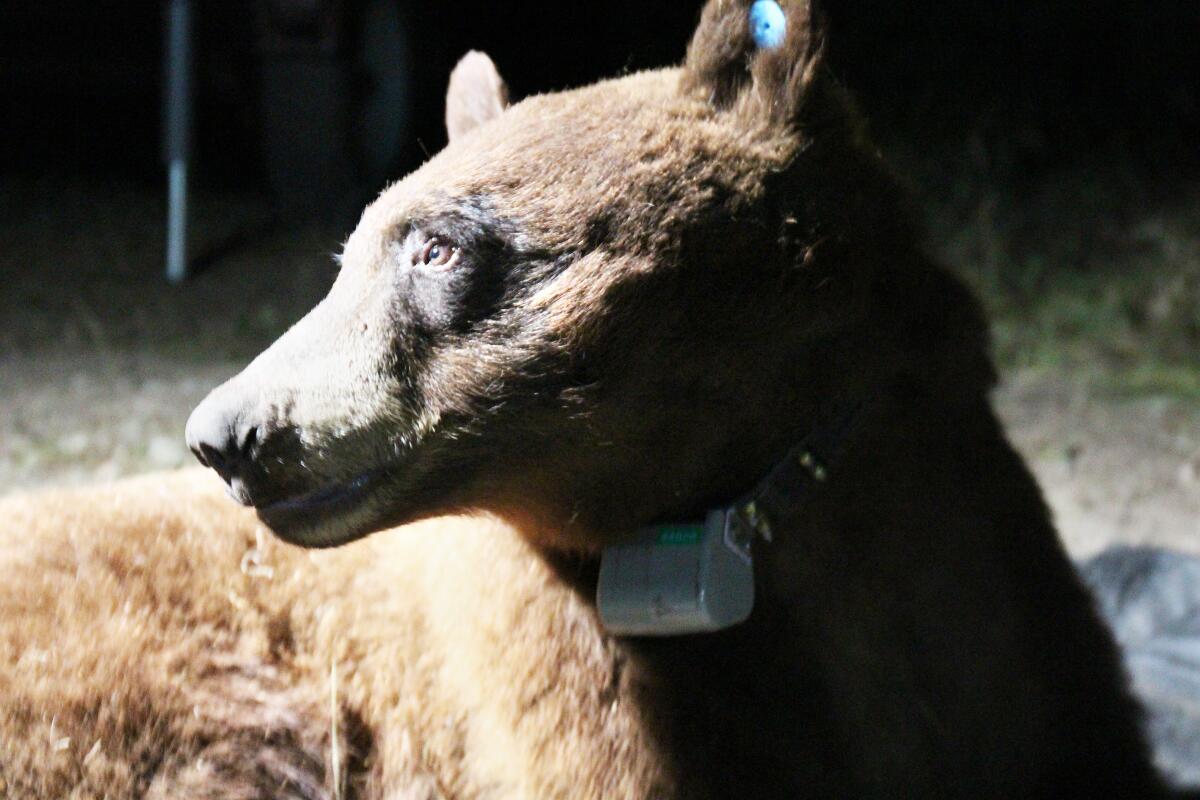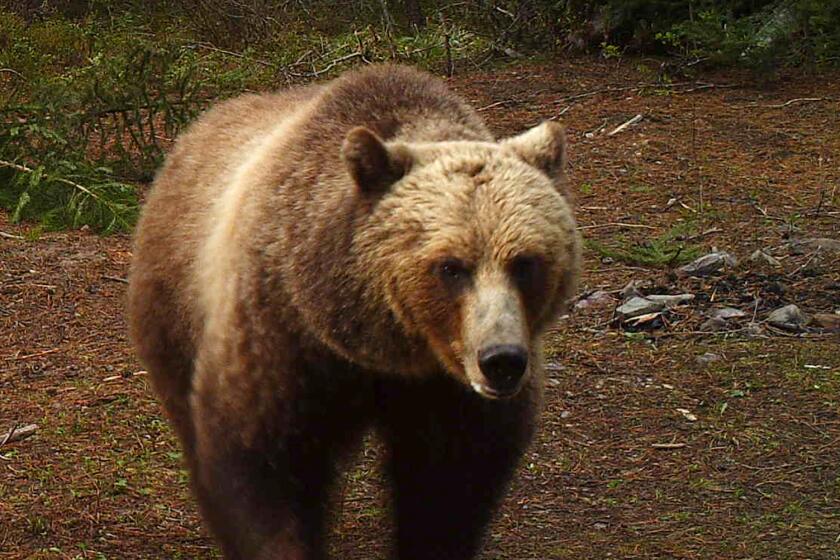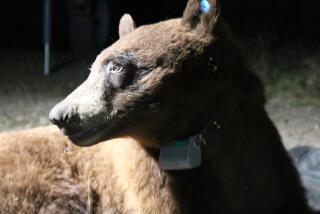Rare black bear is first to be tagged, tracked in Santa Monica Mountains

- Share via
A rare black bear living in the Santa Monica Mountains has been tagged for research, according to park officials — the first bear to make its home in the region in decades.
The male bear, now known as BB-12, was captured last week in the western Santa Monica Mountains, where National Park Service biologists attached an ear tag and GPS radio collar to the 210-pound animal, according to an NPS news release. The bear is the first to be GPS-tracked in the park, which has not been home to a bear population in centuries, according to park officials.
In recent years, black bears have occasionally made their way south of the 101 Freeway — sometimes tragically killed trying to cross the highway — but such spottings are rare and usually short-lived, park officials said.
“He appears to be the only bear here in the Santa Monica Mountains, and he’s likely been here for almost two years based on our remote camera data,” said Jeff Sikich, the lead field biologist of the park’s 20-year mountain lion study. “This seems to be our first resident bear in the 20 years we have conducted mountain lion research in the area. It will be interesting to see how he shares the landscape with our other resident large carnivores.”
Biologists think the bear, estimated to be 3 or 4 years old, could be the cub that made headlines in July 2021 wandering through a Thousand Oaks neighborhood. Since that summer, researchers have captured a bear repeatedly on wildlife trail cameras in the western half of the park, according to the news release.
The furry youngster was spotted toddling down the street by a Ventura County sheriff’s deputy.
The Santa Monica Mountains haven’t had a resident bear population since the late 1800s, when grizzly bears last inhabited the region before they were hunted to extinction in California.
Black bears are not native to Southern California but are the only wild bears in the region, with the closest population living in the Santa Susana Mountains, park officials said. Occasionally, bears travel south of the 118 or 101 freeways: In 2021, one was spotted in Simi Valley, and in 2016, another was recorded in the Santa Monica Mountains. But park officials said there’s no evidence of a breeding population that far south.
“As this bear gets older and is looking to mate, it might attempt to move back north and cross the freeway again,” Sikich said. “With the radio collar, we can track its movements and hopefully know where it may attempt to cross the freeway. This can help us better understand habitat connectivity for wildlife in the area.”
Sikich said his team wasn’t expected to be able to tag the bear, but “an opportunity came up.”
On the 100th anniversary of the last shooting of a wild grizzly in the state, you’ve got to wonder why the bears we exterminated were made the symbol of the state.
“So we decided to do that and place a radio collar on it, and hopefully learn about where it goes, what’s its diet, is it crossing roads?” Sikich said. “There are a lot of basic ecological questions we hope to answer.”
When biologists captured the bear in late April to attach the tagging device, they also conducted a physical exam and took biological samples and body measurements, the news release said.
Park officials reminded hikers and visitors that black bears rarely become aggressive, but if one is spotted nearby, people should slowly back away while making their presence clear to the bear: yelling, clapping hands, whistling and trying to look bigger.
People should not run or make eye contact, park officials said, but fight back if the bear makes contact.
More to Read
Sign up for Essential California
The most important California stories and recommendations in your inbox every morning.
You may occasionally receive promotional content from the Los Angeles Times.












